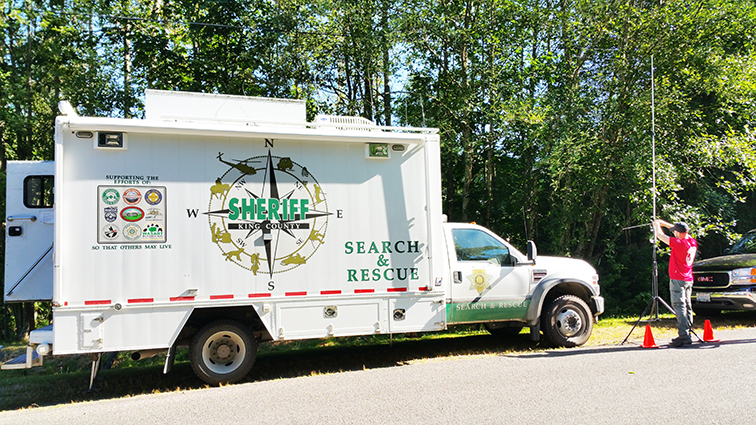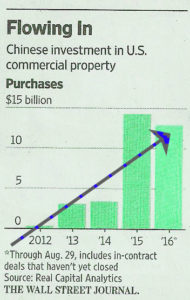(Aug 3, 2016) ATTOM Data Solutions, released its 2016 Schools and Housing Report, which shows that homes in zip codes with at least one good elementary school have higher values and stronger home price appreciation over the long-term than homes in zip codes without any good elementary schools — where homes lost more value during the housing downturn but have seen stronger appreciation during the housing recovery of the last five years.
For the report, ATTOM Data Solutions analyzed 2016 home values and price appreciation along with 2015 average test scores in 18,968 elementary schools nationwide in 4,435 zip codes with a combined 45.9 million single family homes and condos. For purposes of this report, a good school was defined as any with an overall test score at least one-third above the state average (see full methodology below).
Out of 1,661 zip codes with at least one good school, the average estimated home value as of July 2016 was $427,402, 77 percent higher than the average home value of $241,096 in 2,774 zip codes without any good schools.
“While good schools are one of the top items on most home-buyer checklists because of the quality-of-life benefit they provide, this report shows that high-performing schools also come with a financial benefit for homeowners in most markets — at least over the long term,” said Daren Blomquist, senior vice president at ATTOM Data Solutions. “Meanwhile, home prices in zip codes without any good schools tend to be more volatile, which might work to a homeowner’s financial benefit in the short-term but not over the long-term of at least 10 years.”
83 percent of metro areas post higher home values in zips with good schools
Out of 173 metropolitan statistical areas analyzed for the report, 143 metros (83 percent) had higher average home values in zip codes with good schools than in zip codes without good schools, including Los Angeles (65 percent higher); Chicago (65 percent higher); Atlanta (91 percent higher); New York (52 percent higher); and Miami (31 percent higher).
Metro areas where home values in zip codes with at least one good school were at least 95 percent higher than home values in zip codes without any good schools included Birmingham, Alabama (169 percent higher); Flint, Michigan (129 percent higher); and St. Louis (99 percent higher); Detroit (97 percent higher); and Baltimore (95 percent higher).
“In my experience, buyers will almost always choose to buy a home in a good school district. In turn, this creates greater demand for homes in high-performing school districts and causes these sub-markets to appreciate in value at higher rates than other neighborhoods,” said Matthew Gardner, covering the Seattle market — where average home values were 64 percent higher in zip codes with goods schools than in zip codes without good schools. “Interestingly, we see demand for these homes from buyers without school-aged children as well because they look at the school district as an added layer of protection should home prices start to soften.
Homeowners gained $51K more since purchase in zips with good schools
Homeowners in zip codes with at least one good school have gained an average of $74,716 in value since purchase, an average return on investment of 32.0 percent. Meanwhile homeowners in zip codes without any good schools have gained an average of $23,311 in value since purchase, an average return on investment of 27.5 percent.
Average ROI for homeowners was higher in zip codes with at least one good school than in zip codes without any good schools in 114 of the 173 metro areas analyzed for the report (66 percent), including Chicago, Atlanta, New York, Miami and San Francisco. Notable exceptions where homeowner ROI was higher in zip codes without any good schools included Los Angeles, Riverside-San Bernardino in Southern California, Sacramento, Orlando and Washington, D.C.
Home price appreciation more volatile in zips without good schools
The report also found that home price appreciation has been more volatile in zip codes without any good schools over the past decade compared to zips with at least one good school.
Year-to-date 2016 median home prices in zip codes without any good schools on average are still 1 percent below median home prices during the same time period in 2006, while median home prices in zip codes with at least one good school are up 4.5 percent on average compared to 10 years ago.
10-year home price appreciation in zip codes with good schools outpaced 10-year HPA in zip codes without good schools in 128 of the 173 metro areas analyzed for the report (74 percent), including Los Angeles, Chicago, Atlanta, New York and Miami.
Meanwhile, home prices in zip codes without good schools dropped more precipitously during the housing downturn. Between 2006 and 2011 median home prices in zip codes without any good schools decreased an average of 28.9 percent while median home prices in zip codes with at least one good school decreased 23.0 percent during the same time period.
Home price appreciation in zip codes without any good schools has outpaced HPA in zip codes with at least one good school over the past five years during the real estate recovery (47.9 percent increase versus 42.2 percent increase respectively).
Ranking of “Good School Bargain” zip codes
The report also ranked 117 zip codes as “Good School Bargains.” All of these zip codes had at least one good school along with a year-to-date 2016 median home sales price of $150,000 or lower. School scores and home prices have improved compared to one year ago and five years ago in all of these zip codes, with the ranking based on 10-year home price appreciation, from lowest to highest (lowest indicating the best bargain relative to the peak).
The Top 10 zip codes with good schools that represent the best bargain home buying opportunities nationwide include zips in Chicago; Cleveland; Saginaw, Michigan; Milwaukee; Tampa-St. Petersburg; Orlando; Las Vegas; Homosassa Springs, Florida; and Riverside-San Bernardino, California.
Report methodology
For this analysis ATTOM Data Solutions (parent company of RealtyTrac) looked at test scores for 18,968 elementary schools nationwide in 4,435 zip codes with a combined 45.9 million single family homes and condos. School test scores are from each state’s Department of Education in 2015. Test scores are based around the test average of each state with the state average being a score of 1. For purposes of this report, a good school was defined as any with an overall test score at least one-third above the state average (1.33 or higher). The highest scoring school in each zip code was used for the zip code analysis. Home value and median price data is from publicly recorded sales deeds and mortgages for single family homes and condos. Home value data is as of July 2016, and median home prices are based on January to June 2016 sales compared to the same time period in previous years.







